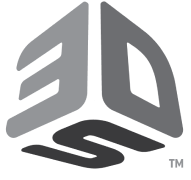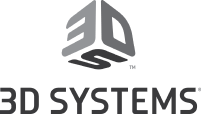3D Systems engineers, manufactures, and sells 3D printers, printing materials and software solutions for additive manufacturing. More than 30 years ago, 3D Systems brought the innovation of 3D printing to the manufacturing industry. With 2,400 employees in 25 offices worldwide and $615 million in annual revenue, 3D Systems’ technologies and services address a variety of advanced applications for prototyping through production in markets such as aerospace, healthcare, and entertainment.
“Because our printers are in short supply, we have a limited set of hardware that we can test with. That’s why being efficient with the time that we have on the hardware and maximizing our testing for the customer is our highest priority.” -Moira Tuffs, Software QA Manager at 3D Systems
For the QA team at 3D Systems, their biggest challenges came down to a limited supply of 3D printer hardware, a lack of proper testing documentation, and growing customer expectations. These challenges meant that 3D Systems struggled to manage and execute the necessary testing for each release. According to Software QA Manager Moira Tuffs, “ [Before TestRail] We documented our testing on Word documents, spreadsheets, whiteboards, ad hoc testing, and some of it was not documented in any shape or form.” 3D Systems knew they needed a better test management solution that could keep pace with their customers’ needs.
3D Systems’ goal was to improve organizational communication and streamline their test management processes to deliver faster, more efficient product releases to their customers. 3D Systems turned to TestRail to gain greater visibility into their testing efforts, improve test reporting, and streamline their testing workflows to meet their goals.
Improve Visibility with Built-in Reporting
With real-time visibility into testing progress, Moira could start managing workloads across the team much more easily, identify blockers faster, and help team members work through complicated issues. She explains, “By just seeing the current test runs, I can quickly track several different projects and see exactly what everybody’s progress is. Before TestRail, tracking progress on a daily basis could be painful. I needed to contact different people and attend different meetings. But now, I can quickly go into TestRail and see the team’s progress with that visual reporting clue without having to wait for somebody to ask for help.” TestRail helps increase visibility into their quality process and improves the entire team’s confidence in deploying new releases.
“As a manager, I love that TestRail allows me to quickly see how things are going. I can see the progression of the test plans and test runs and [TestRail’s reporting capabilities] help me know if we are on track.”
Moira Tuffs
Software QA Manager
Increase Visibility With Stakeholders
TestRail’s built-in reporting also helps Moira and her team communicate vital information to management. Moira states, “Being able to show the progression of the testing and the state of a project through TestRail’s reporting and having a common understanding across all of the projects gives us [QA] a stake in the ground. At the executive level, the visualization of the charts tells a huge story in a matter of seconds.” She continues, “Before we took on TestRail, no single clear picture explained the state of all of our projects in the same apples-to-apples comparison. Now, we can easily share a consistent picture of the state of testing to executives.” 3D Systems’ QA team leverages TestRail’s real-time charts and dashboards in the Reports area to increase visibility into their quality process and improve communication with stakeholders and executives.
“We can’t afford to have bugs popping up from release to release. TestRail enables us to deliver consistent product quality and communicate the state of testing in simple terms to management and executives.”
Moira Tuffs
Software QA Manager
Ease of Use: Flexibility, Easy Onboarding, and Streamlined Workflows
One of the most significant advantages of TestRail for the 3D Systems team is its overall ease of use, more specifically, its ease of onboarding, flexibility, and intuitive workflow. This is particularly crucial when they need to flex resources up or down based on their upcoming release schedule. Moira explains, “When we have heavy test work—usually when we’re getting ready for release—we bring other people on board to help with testing. When that happens, whether they are contract workers or people from other teams, we need to onboard them quickly and TestRail supports that.” With TestRail, 3D Systems can standardize their test management in a centralized system that allows them to easily onboard new users and maintain visibility into their testing efforts.
Because TestRail allows them to document all their test cases in a single place, write repeatable test cases in a structured format, and record test results consistently, practically anyone can help with testing during hectic release cycles. This makes it easy to review test case activity, jump in to pick up where the work was left off, and spread the test load when needed. This level of flexibility allows the team to adapt and adjust resources as necessary without losing progress or slowing down testing.
“TestRail allows us to spread the testing load across the teams and bring different people into the team very quickly. That quick and easy onboarding is a huge productivity gain for us. In crunch time, we can bring a whole different team in and know that we are going to get the same testing done.”
Moira Tuffs
Software QA Manager
Flexible Hierarchical Folder Structure for Test Cases
Furthermore, TestRail allows 3D Systems to organize test cases in a flexible hierarchical folder structure. Moira explains, “The hierarchical structure helps us highlight where we are missing tests and where to put our attention. It’s a quick check to say, ‘Have we got all the screens? Have we got all of the workflows? Within the screen, have we got all the right workflows?’ It’s a useful organization tool for us to see the test coverage that we do have.” TestRail’s hierarchical folder structure inside the test case repository makes it easy for 3D Systems’ to quickly spin up runs, prioritize test cases, and track coverage.
TestRail’s reporting capabilities and ease of use provided the QA team at 3D Systems with real-time visibility into their testing progress, a way to communicate more clearly with key stakeholders, and streamlined workflows that provide greater flexibility and easier onboarding. Moira explains, “The value of TestRail is the visibility into the testing process, which helps maintain our QA timelines, and deliver high quality products. The fact that we have produced a solid product with TestRail is enough evidence for our stakeholders and executives to have a greater confidence in the quality of the product.” As a result, the QA team at 3D Systems was not only able to change their entire company’s culture around QA; using TestRail to improve quality has also boosted overall confidence in the product quality.




